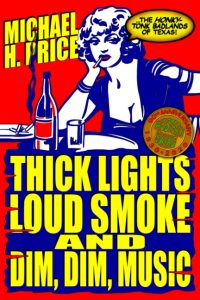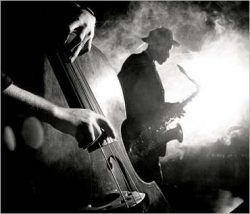Afro-Cuban culture, Blog, Cuba, Travel to Cuba
Does the street scene look familiar?
It should. Santiago de Cuba (and Havana) were the architectural models for New Orleans.
New Orleans is far more Cuban in look than French. (Havana administered New Orleans when the Spanish controlled it during the important formative years between 1763 until 1803.)
In 1793, 30,000 French growers, refugees from the slave rebellion in Haiti, arrived in Cuba, mostly in Santiago de Cuba.
After a period of over 15 years in which they absorbed Cuban culture, these same people were expelled from Cuba between 1809 and 1810 by the Spanish after a political dispute between Spain and France. Most went to New Orleans where they had a huge impact on that city’s culture and music.
(Interestingly enough one of Cuba’s most beautiful and music cities, Cienfuegos, was founded by settlers from Bordeaux and Louisiana in 1819, so the influence flowed both ways.)
About La Familia Valera Miranda
La Familia Valera Miranda has been playing traditional Cuban son – the style popularized by Buena Vista Social Club – for generations. Music is a family affair for these famous musicians. Félix Valera Miranda, founder of the group, sings & plays guitar while his wife Carmen plays maracas. Their sons – Enrique, Raúl & Ernesto – play cuatro (an 8-string guitar tuned in pairs), bass & bongo respectively.
Since the 19th century, La Familia Valera Miranda has played a significant role in Cuban culture by collecting & preserving the deep-rooted traditions of the legendary Sierra Maestra mountain region. Original members of the family were subsistence farmers in the rural areas of the Oriente (eastern Cuba), primarily the Cauto River valley near the villages of Bayamo & Las Tunas. Later, they migrated to the areas around Santiago de Cuba & Guantánamo where they reside today.
The Valera & Miranda ancestors brought with them religious elements of Bantu origin alongside secular customs from the Canary Islands & Andalucía. These influences are found in their songs & the musical instruments they play.
More info: La Familia Valera Miranda
Great news!
You can now watch this video – and all Spanish language videos – with English subtitles. It’s free!
Click here for instructions on how to turn on English subtitles.
– Ken McCarthy
Jazz on the Tube
P.S. Our unique programming is made possible by help from people like you. Learn how you can contribute to our efforts here: Support Jazz on the Tube
Thanks.
Go to Cuba with Jazz on the Tube as your guide:
Click here for details
Blog
A trip to the heart of New Orleans.
Produced by Jim DeRogatis and Greg Kot at WBEZ, Chicago.
– Ken McCarthy
Jazz on the Tube
P.S. Our unique programming is made possible by help from people like you. Learn how you can contribute to our efforts here: Support Jazz on the Tube
Thanks.
Blog, Chroniclers, Jazz on the Tube Interview
Download the mp3 here
We’re following up on our special program “Ornette: Deep from the Heart of Texas” with Dave Oliphant
We go even further down this fascinating rabbit hole.
When Ornette was 19 (1949), he had an extended gig in Amarillo, Texas where he regularly jammed “after hours” with a legendary avant-garde hillbilly steel guitar player.
The history of American music is richer and more surprising than we can imagine!
NOTE: There were THREE Billy Briggs in Texas: a fiddle player, a saxophonist, and the artist in question.
You can get Michael H. Price’s fascinating book “Thick Lights, Loud Smoke, and Dim, Dim Music” here:
Note: It was a performance of this tune by a visiting jazz band performing in the auditorium of I.M. Terrell High School in Fort Worth that Ornette says inspired him with the idea of playing the saxophone (c. 1943)
– Ken McCarthy
Jazz on the Tube
P.S. Our unique programming is made possible by help from people like you. Learn how you can contribute to our efforts here: Support Jazz on the Tube
Thanks.
Afro-Cuban culture, Blog, Cuba, Cuban Jazz, Video and audio
Made in 1964 and loosely translates to “We Are the Music”
Written and directed by Rogelio Paris (1936-2016)
This film was his first major project and he made it when only 28.
Paris worked as a documentary maker at the Cuban Film Institute (ICAIC) and was also a permanent professor of Filmmaking at the Faculty of Cinema, Radio and Television of the Institute of Higher Art
This single film could be the basis of an entire University course in Cuban music.
A rare panorama of Cuban music and dance from the 1960s. Featuring legendary Cuban musicians as well as vibrant spontaneous performances, We Are the Music captures the mood and vitality of Havana during a golden period.
Note: If you’re a jazz hound and nothing else will do for you, fast forward to 22:00.
Great news!
You can now watch this video – and all Spanish language videos – with English subtitles. It’s free!
Click here for instructions on how to turn on English subtitles.
– Ken McCarthy
Jazz on the Tube
Go to Cuba with Jazz on the Tube as your guide:
Click here for details
Blog, Puerto Rico
Produced by Paradiso Films; written, edited and directed by Paloma Suau; and funded by Banco Popular in 2001.
Filmed in Puerto Rico and Puerto Rico North (aka El Bronx)
A beautiful mix of historic and contemporary footage paying homage to the Bomba and Plena.
Starring: Marc Anthony, Jose Feliciano, Danny Rivera, Ismael Rivera Jr, and more.
In Spanish, but even if you don’t have any Spanish you will learn a lot. As the great Bronx philosopher said: “You can observe a lot by just watching.”
If you don’t know this music, there is a hole in your American music education.
– Ken McCarthy
Jazz on the Tube
Blog, Chroniclers, Jazz on the Tube Interview, Ornette
Click here if you have a memory of this artist that you’d like to share
Download the mp3 here
Avant-garde genius or one of many Master Musicians who sprung from the earth of one of the most fertile musical cradles the world has ever seen?
Of course, Ornette is both.
In this unique podcast we focus on what others have ignored: How Ornette comes straight from the big open musical heart of Texas.
Move over Brazil, Cuba, New Orleans…Texas is in the house.
Errata
Three misspeaks
1. “Captain Dyett”
2. “When Ornette worked Silas Green”
3. Eddie Durham wore his hair long and braided in a Native American style as a child, but probably cut it long before becoming an adult. (In addition to being of Afro-American, Mexican and Irish ancestry, Durham’s mother was of Cherokee descent and his father of Mohawk. His first language as a child was Spanish.)
– Ken McCarthy
Jazz on the Tube
P.S. Our unique programming is made possible by help from people like you. Learn how you can contribute to our efforts here: Support Jazz on the Tube
Thanks.



